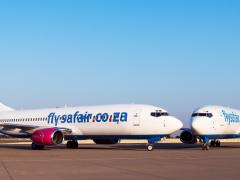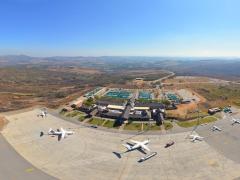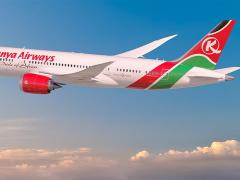DO YOU know the exact
flight paths taken by the
aircraft carrying your
passengers? Following a spate
of tragedies in the aviation
sector, most notably the
shooting down of flight MH17,
travellers are asking questions
they expect their travel agents
to know the answers to.
“We have had several
queries from corporate clients
flying within Europe as to the
routings of airlines in proximity
to the Ukraine and Israel,”
says Rachael Penaluna,
business manager of Sure
Maritime Travel. She says
clients need assurance that
agents check the security
situation and fly zones in
times of war before booking
their routings.
Sailesh Parbhu, md of XL
Nexus Travel, says: “We cannot
predict if anything will happen
but an identified conflict zone
by the relevant world bodies
should not be taken lightly and
we will ensure that our clients
are informed of the areas so
they too have a choice in the
selection of carrier. It is in our
best interest to ensure we
minimise any additional stress
our clients may feel flying over
certain unstable areas.”
Emirates was the first
airline to divert some of its
flights to avoid Iraqi airspace
and protect against the
threat of Islamic militants
on the ground. The airline
told the BBC it was taking
precautionary measures and
working on alternative routing
plans for flights using Iraqi
airspace. “We are closely
monitoring the situation along
with international agencies
and will never compromise
the safety of our customers
and crew.” European airlines,
including Air France and KLM
have reportedly taken similar
approaches.
Sailesh believes international
travel will always be a risk
as many factors cannot be
controlled. “The aviation
industry has largely been a
very safe environment. Any air
accident will be one too many
as the number of fatalities is
usually very high. This in itself
is what is worrying. The impact
on international travel will
not be a decrease in flights,
[rather] route changes, more
vigilance about safety, longer
security checks and pre-flight
screening of travellers.
“All we can do as a TMC,
is keep our travellers alert to
security and safety standards
and changes. We can ensure
that our travellers are well
informed of the destination
and routes they are flying.
It is important to remain
transparent, informed and
within constant communication
with our aligned carriers as
this is a fundamental objective
when we offer our services to
our clients,” adds Sailesh.
While agents hold an airline
liable for carrying their clients
safely, Linden Birns, md of
Plane Talking, says airlines
rely on information from
government authorities on the
safety of their airspace.
At a recent meeting between
Iata, Iosa, the Airports
Council International and the
Civil Air Navigation Services
Organisation to review
processes for the overflight of
conflict zones, Iata dg and ceo,
Tony Tyler, said: “Airlines need
clear and accurate information
on which to base operational
decisions on where and when
it is safe to fly. In the case of
MH17 airlines were told that
flights above 32 000 feet that
traversed Ukraine would not
be in harm’s way. We now
know how wrong that guidance
was. It is essential that
airlines receive clear guidance
regarding threats to their
passengers, crew and aircraft.
Such information must be
accessible in an authoritative,
accurate, consistent, and
unequivocal way. This is the
responsibility of states.”
The organisations agreed
to the formation of a senior
level task force, comprising
state and industry experts to
address the civil aviation and
national security issues arising
from MH17. The industry
called on the International
Civil Aviation Organization to
address fail-safe channels for
essential threat information
to be made available to
civil aviation authorities and
industry as well as the need to
incorporate into international
law, measures to govern the
design, manufacture and
deployment of modern antiaircraft
weaponry.
Coflict zone- do you know your passengers' flight path?
Comments | 0












